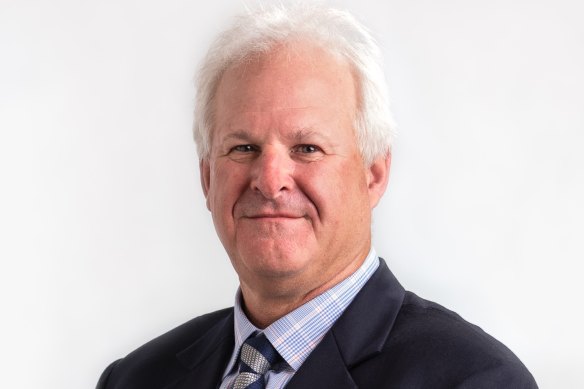- Sponsored
- Business
- Companies
- Bulls N' Bears
Larvotto reveals $652m EBITDA for gold-antimony play
Brought to you by BULLS N’ BEARS
By Craig Nolan
A compelling prefeasibility study (PFS) for Larvotto Resources’ Hillgrove gold-antimony project in New South Wales shows the operation will spit out an EBITDA of $652 million during a seven-year mine life.
The study has delivered a suite of robust financials for the dual mineral project, including a pre-tax net present value (NPV), using an 8 per cent discount rate, of $261 million and post-tax of $157 million. A pre-tax internal rate of return (IRR) of 80 per cent and post-tax 50 per cent, using estimates of US$2000 (AU$3078) per gold ounce and US$15,000 (AU$23,090) per tonne of antimony, suggests there may be some serious legs to the project.

Larvotto Resources managing director Ron Heeks has steered the company through to an impressive prefeasibility study (PFS).
Larvotto is targeting 80,000 gold equivalent ounces annually for seven years, aiming to return post-tax net free cash flow for the project of $252 million and an impressive payback period of about two years.
Much higher near-current spot prices of US$2350 (AU$3617) gold and US$23,000 (AU$35,400) per tonne of antimony delivers a massive boost to the numbers, with EBITDA jumping to $1.08 billion during its mine life, NPV post-tax leaping to $383 million and IRR increasing to 173 per cent pre-tax and 113 per cent post-tax.
‘All financial and technical objectives have been met and the capital cost of the development is low compared to a greenfields development.’
Larvotto Resources managing director Ron Heeks
Net free cash flow bounds up to $553 million post-tax and the project payback period reduces to just one year. The average free cash flow pre-tax during the life of the mine rises from $64 million using the PFS assumptions to $126 million if using current spot prices.
Management also revealed a maiden ore reserve of 606,000 ounces at 6 grams per tonne gold-equivalent, stating that the ore reserve could be bolstered further by the sizeable resources yet to be evaluated for inclusion to reserves.
Larvotto Resources managing director Ron Heeks said: “In only seven months since our acquisition of the significant Hillgrove Project, Larvotto has produced a compelling prefeasibility study that highlights the financial and near-term gold and antimony development potential of the project.
All financial and technical objectives have been met and the capital cost of the development is low compared to a greenfields development, with much of the required surface and underground infrastructure already in place.”
The company estimates pre-production capital costs of $73.4 million. It comprises $88.5 million in capex including contingencies, offset by $15.1 million in pre-production revenue.
The all-in sustaining capital (AISC) costs for the mine life have been estimated at $184.2 million, including contingencies.
The Hillgrove project is aiming for annual gold production of 41,100 ounces of gold with 5400 annual tonnes of antimony – equal to about 80,000 gold equivalent ounces per annum. The plan is for 564,000 gold equivalent ounces to be mined during the project’s mine life.
The PFS has estimated an extremely low AISC of $820 per gold ounce with the antimony offsets. Using the current gold spot price, the AISC reduces to a ridiculous negative $82 per ounce, again due to the addition of the antimony revenue credits.
Management says it will now make an immediate push to undertake a definitive feasibility study (DFS), with completion expected by the end of the year. The short timeframe is due to the fact that many items are not required as they are already in place due to the level of existing extensive surface and underground infrastructure afforded to the project.
The focus in the DFS will be on optimising metallurgical testwork to maximise the free gold that can be extracted, with a further aim to increase concentrate production from processed ore. Larvotto is looking to have its project financing in place by early next year and is targeting first ore production by early 2026.
The project sits 23km east from the major regional city of Armidale in northern NSW and is ideally placed close to existing highways, rail links and regional airports.
Management says Hillgrove is Australia’s biggest antimony deposit and one of the world’s top 10. Demand for antimony, a critical metal used as an alloy to harden and strengthen other metals, is rising due to its use in solar panels for stability of the glass when exposed to ultraviolet rays, electronics and varied military uses.
The strategy of management is to advance the development of Hillgrove and continue to further explore its 254 square kilometres of ground to grow the existing resource. If it can succeed in expanding the gold and antimony resource and continue to benefit from rising prices for both commodities, Hillgrove may well be a project worth watching.
Is your ASX-listed company doing something interesting? Contact: mattbirney@bullsnbears.com.au